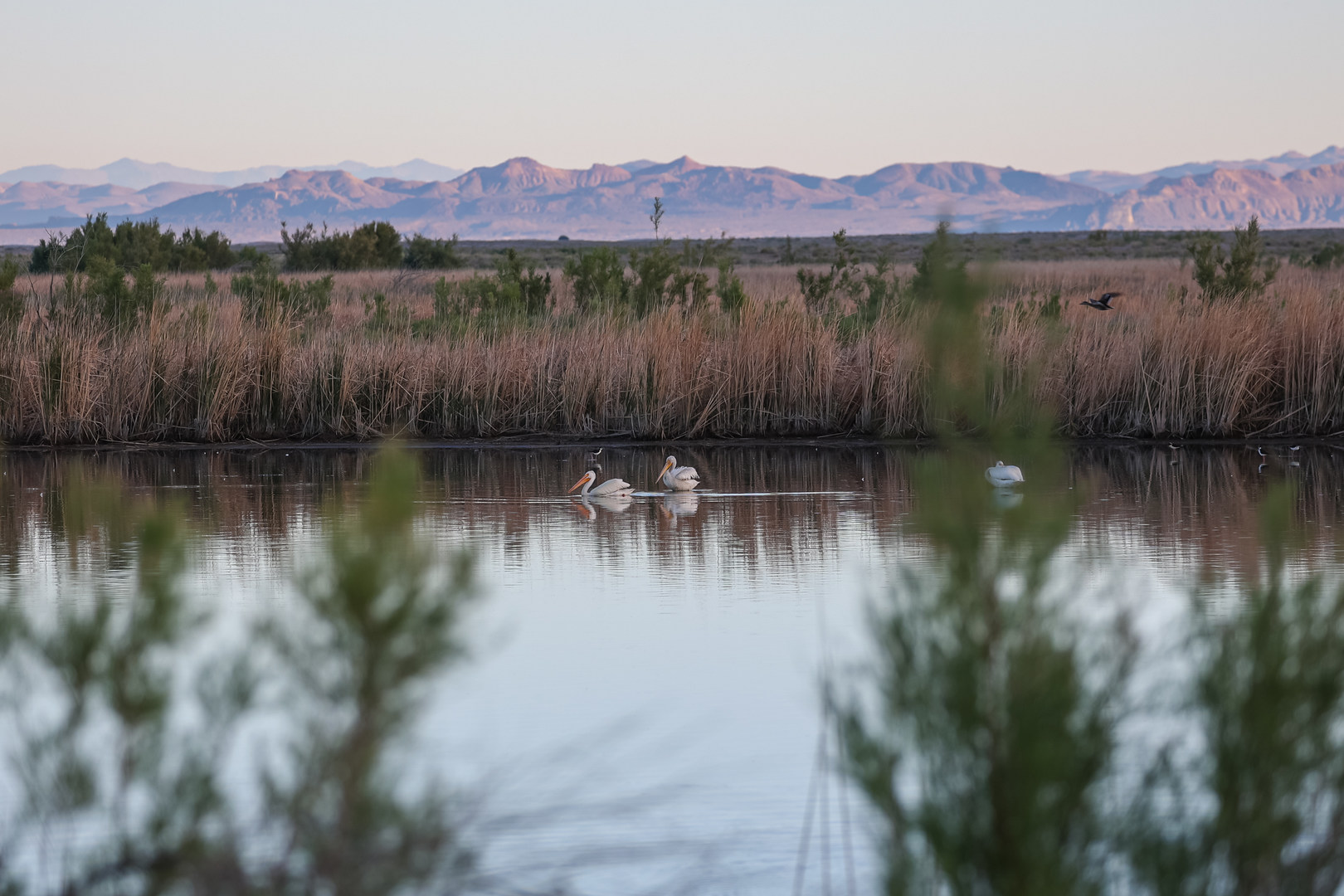Stillwater National Wildlife Refuge is a collection comprising 79,570 acres of lakes and canals along the Carson Sink that is home to year round and seasonal popluations of bird and waterfowl species.
Set in a section of land that at one time was the bottom of Lake Lahontan, a Pleistocene-era lake that once covered over 8000 square miles of land in what is now northern Nevada and northeastern California, today the refuge's area sit at what should be the terminus of the Carson River, however agriculture and water diversion have limited the amount of water the passes through here.
Built around early 1900's irrigation canals to deliver water from the Carson River to area agriculture, seasonal conditions and varying agricultural use mean that the amount of water that passes through the refuge will fluctuate, and all lakes within the refuge will change and vary at any given season. The wildlife refuge today encompasses several lakes over a mostly undeveloped landscape.
This landscape today is home to nearly 300 species of birds who reside here year-round or visit the refuge along their migration route. Counts place numbers at more than a quarter million waterfowl, hundreds of thousands of shorebirds, and 20,000 other water birds. There is also a thriving population of animals here.
While there is minimal infrastructure for visitors in the refuge, the southern portion has several accessible features that are great for those looking to learn about the landscape and view some of these birds. The refuge entrance along Stillwater Road has signs with park maps and rules.
The first feature of interest and probably the main must-see point is Stillwater Point Reservoir, an area with an observation tower perched overlooking the reservoir lake and several interpretive signs along the short Interpretive Trail that leads to the observation deck.
The Auto Tour route leaves from here. This route is a loop trail that passes by Foxtail Lake and several short paths accessing the edges of the lake, along with an observation blind on the lake's western edge accessible via a short walk.
Returning on the Auto Tour route passes Tule Trail, a 1.5 mile walking trail with a series of interpretive signs leading to another set of wetlands frequented by birds and waterfowl.
Those wanting to explore a little bit more can visit the undeveloped northern area, which has several more large lakes, along with ramps for boats and paddle craft. Each lake has its own restrictions as to what type of boat is permitted on the water. Please see or contact the park office for more information.
Two primitive campgrounds are designated within the refuge. Both are free to stay at and the experience will vary depending on the water situation specific to your visit. Division Road Camping Area is set further to the east side of the refuge closer to the base of the mountains, and Lead Lake Camping Area sits at the center of several larger lakes toward the northern end of the refuge.
There is no fee to enter and use Stillwater National Wildlife Refuge. All roads within the refuge are well maintained gravel and generally passable by all vehicle types during dry conditions. Dogs are permitted in the refuge on leash. There is no water available, and vault toilets are located at campgrounds and parking areas. And there is very limited cel service throughout the refuge, so plan on having any navigation preparged before leaving Fallon.
Binoculars and bug spray are two other essentials for visitors.
Visitors should go to the Stillwater National Wildlife Refuge website prior to arriving to help plan their visit.
One other essential resource is the refuge Field Office located at 1020 New River Parkway, Ste 305 in Fallon. This office has maps, as well as fishing and hunting permits. The office keeps normal hours, however maps and information are also available at an outside kiosk for those who stop by during closed hours.




























Comments
Sign In and share them.